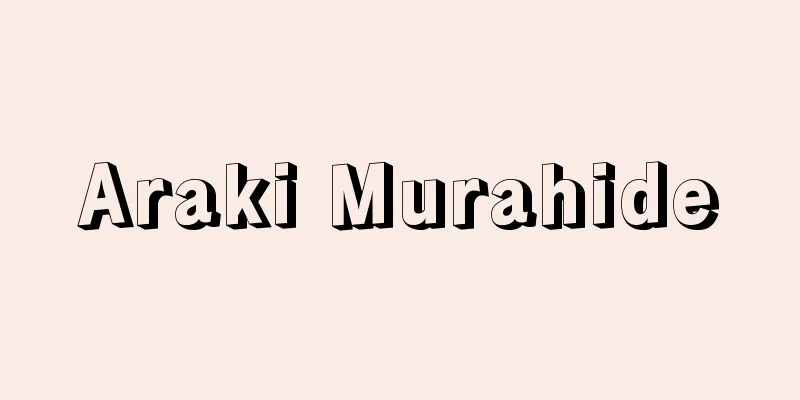Root - Gokon (English spelling) root

|
The smallest unit that carries the core of a word's meaning (semantic significance) and is extracted by analyzing a word. The specific extraction differs depending on the viewpoint of analysis. For example, in the case of mi-ru "to see" and mi-seru "to show," mi- is analyzed as the root (and in the former case, the stem as well), -se- as the affix, and -ru as the suffix, but etymologically, it is possible to establish by comparing me "eye" (which cannot be analyzed synchronically), ma-mo-ru "eyes to protect = to stare intently," and meri (the auxiliary verb "meri"). In this case, there is a position that accepts the alternation of root and vowel, on the grounds that units consisting of consonants are contrary to the speaker's consciousness. Some people limit "roots" to historical analysis and use "bases" in synchronic analysis. A group of words that contain the same root is called a "word family," and this is used in comparative research. For example, we may extract words from kur-o-si "black," kur-a-si "dark," and kur-u "dark," and compare them with the Ainu word family. As an example from the Indo-European language family, the Indo-European root * gen- "to give birth, to be born" appears in three forms, * gen-, * gon-, and * g-, depending on the difference in the stem vowel (→ vowel alternation), and in English, gender and generation are derived from * gen-, epigone (descendant, one born later) from * gon-, and nation, native, and nature from * g- (zero vowel). Source: Encyclopaedia Britannica Concise Encyclopedia About Encyclopaedia Britannica Concise Encyclopedia Information |
|
単語を分析していって抽出される,その単語の意味の中核部(語義的意義)を担う最小単位。具体的抽出は分析の観点により異なる。たとえば mi-ru「見る」,mi-seru「見せる」において,共時論的には mi-が語根(前者では同時に語幹),-se-が接辞,-ruが語尾と分析されるが,語源的にはさらに me「目」(共時論的には分析不可能),ma-mo-ru「目守る=じっと見つめる」,meri(助動詞の「めり」)などを比較して を立てることができる。この場合,子音だけの単位は話し手の意識に反することなどを理由に を立てて語根母音の交替を認める立場もある。また「語根」は史的な分析に限定し,共時論では「語基」とする人もある。同一語根を含む単語群を「単語家族」といい,これが比較研究に用いられる。たとえば,kur-o-si「黒し」,kur-a-si「暗し」,kur-u「暮る」などから を抽出し,これをアイヌ語の単語家族の と比較することがある。インド=ヨーロッパ語族から一例をあげると,インド=ヨーロッパ語根 *gen-「生む,生まれる」は語幹母音の相違によって *gen-,*gon-,*g-という三つの形で現れ(→母音交替),英語では *gen-から gender,generationが,*gon-から epigone(子孫〈のちに生まれた者〉)が,*g-(母音ゼロ)から nation,native,natureなどが派生した。
出典 ブリタニカ国際大百科事典 小項目事典ブリタニカ国際大百科事典 小項目事典について 情報 |
<<: Kokon Iroha Hyorin - Kokon Iroha Hyorin
Recommend
Vienna Atonal School
…The achievements of the pre-classical period wer...
Etelis marshi (English spelling)
… [Makoto Shimizu]. . … *Some of the terminology ...
Shimokawa [town] - Shimokawa
A town in Kamikawa District, Hokkaido. With vast v...
Auditorium
In ancient Greece, hills were used to design outdo...
Burning volcano - Takuhiyama
This mountain is located in the southern part of N...
Aizubange [town] - Aizubange
A town in Kawanuma County in the western part of t...
Shadow Sickness
= Shadow troubles ※Joruri, Akazomeemon Eiga Monoga...
Bentham, S.
…After the Industrial Revolution, various woodwor...
Mussolini - Benito Mussolini
Italian politician and founder of Fascism. Born a...
Izunohara
…It occupies the lowlands of the Hasama River bas...
Horatio Greenough
1805‐52 American neoclassical sculptor. Born in Bo...
Twenty Unfilial Acts of Our Country - Honcho Nijufukō
Ukiyo-zoshi. Five volumes. Written by Ihara Saikak...
Butler, ST
…However, after World War II, rocket observations...
Plum Downwind - Umenoshitakaze
A collection of Kabuki actors' artistic talks....
Euander - Euanderus
…a figure in Roman legend. Greek name Euandros. 6...









